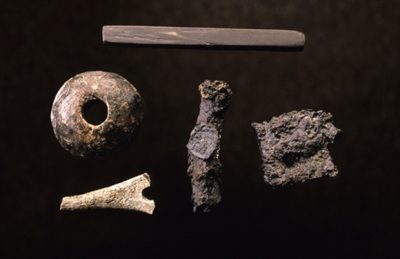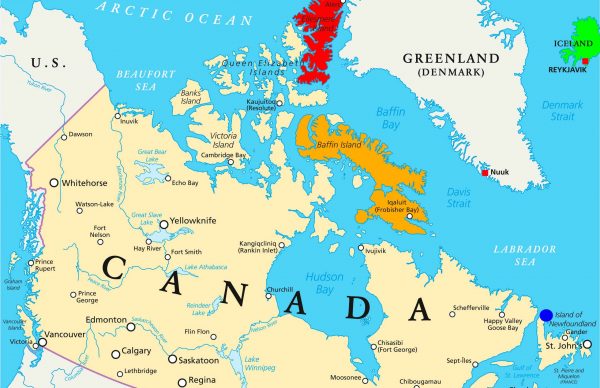Source:Ahora información
The arrival of Viking explorers to the American continent prior to the Spanish Discovery was considered by historical science until the 1960s as a hypothesis for which there was no scientific evidence. The various Scandinavian peoples, in the early Middle Ages, developed efficient navigation techniques and with them, in the 10th century, discovered the Greenland coastline and colonised it. Medieval Scandinavian culture did not develop writing and has left no legacy for history. The Norse oral tradition, the so-called Sagas, recounts different versions of voyages to West Greenland, where the Vikings are said to have discovered other lands and fought against their inhabitants. These oral legends included the myth of Vinland, a green and fertile land where the Vikings found grapes to make wine. From the other continental point of view, it is historically and anthropologically accepted that advanced hunters of the indigenous Arctic peoples were able to reach the latitudes of Greenland in search of large prey. This other possible fact is the key to this great historical enigma, as we will share later.
Anglo-Saxon culture breathes a deep resentment towards Spain for the Discovery of America, although its most brilliant intellectuals have never hesitated to acknowledge the historical truth and the role of Catholic Hispanidad on the American continent. The possibility of scientifically proving that Norse navigators would really have been the first Europeans to set foot on American soil, is the pulsating dream of a great host of scientists. This anger and frustration, uncontrollable for some, translated in the 19th and 20th centuries into the repeated falsification of evidence of a Viking presence in America before Columbus’ caravels. We can recall today, with satisfaction, the cases of the Beardmore relics, the Kensington stone, the Vinland map and the Mellgren coin. All of these were sensational and spectacular finds in their time, and all of them proved to be manipulated and counterfeit in nature. The attempt to change history is a timeless human corruption.
In a coastal enclave on the island of Newfoundland, now part of Canada, called L’Anse aux Meadows, there are archaeological remains that were considered, until the 1960s, to be the remains of an archaic Eskimo settlement. This conception was shattered by the arrival of the Norwegian couple Ingstad, who, after nearly a decade of intensive excavation, announced to the world that the traces of ancient human settlement at L’Anse aux Meadows were in fact a 10th-century Viking settlement. The groundbreaking story was initially greeted with obligatory scepticism. The Ingstads defended their theory on the type of architecture found and, above all, on the discovery of fragmentary metal objects corresponding to medieval European metallurgy. The Ingstads were jubilant that the findings of their research could not be attributed to the native Indians of the island and that they had found scientific proof of the Viking discovery of America. Progressively, enthusiasm for the Norwegians’ theory flourished in international institutions where Globalisation was dawning. In 1968, the Canadian government officially recognised L’Anse aux Meadows as the first European settlement in the Americas and, in 1978, UNESCO declared it a World Heritage Site. A lost site on the forgotten northern tip of America had cracked the Columbus myth at the base. Anglo-Saxon history was avenged.

These are the main Viking remains unearthed by the Insgtad excavations. What do these objects really prove in anthropological terms?
In the channels of cultural dissemination most accessible to the population through the Internet, surprisingly detailed descriptions can be found of the supposed Norse population in Newfoundland, whose historical significance has exploded in the present time with the recent research of the University of Groningen. This Dutch team – our old Protestant enemies are at it again – claims that, by studying the traces of cosmic radiation in the fossil of wood cut with an iron tool, the construction of the settlement of L’Anse aux Meadows can be dated to 1021. The publicity of this research in the journal Nature has had an enormous media impact and has made the Newfoundland site a global point of attraction for today’s society, even though fifty years have passed since the theory of its reinterpretation. Much of the popular success of the “scientific proof of the Viking discovery of America” lies in the moment in which it has arrived: we live in a time of new and terrible manipulative currents against the past of Spanish America and the figure of Christopher Columbus. Sadly, the entire Spanish mainstream media has participated as an uncritical voice in the news of the “Viking cosmic ray” and the supposed scientific proof of a Norse settlement in America, five hundred years before the Spanish Discovery, has circulated with absurd glee in the current hollow Spain of Pedro Sánchez. The multiple precedents of attempted scams, through the manipulation of artefacts, to change the history of the first contact between Europe and America should have created a firm attitude of international scepticism in the academies of history. The historiography on L’Anse aux Meadow shows that this has not been the case.
Admitting that there are no doubts, for the moment, about the honesty of the findings that lead to the official interpretation of the archaeological remains of L’Anse aux Meadow today, we highlight to our readers the main criteria that do not support the theory of a Viking presence in Newfoundland in the 11th century.
In an order of internal criticism, the site lacks traces inherent to a medieval human settlement such as the remains of farm animals and human skeletal remains; the few metal objects found, such as a needle and the remains of axes, do not correspond to a period industry that would indicate an enclave with a settled population. Nor have any navigational or other objects of unmistakable Viking origin been found.
In an order of external criticism, it is essential to note that specific archaeological remains of Viking origin have been found elsewhere in the Canadian Arctic archipelago. The northern islands of Baffin and Ellesmere, ancestral hunting grounds of the Inuit, are located less than a thousand kilometres off the west coast of Greenland. On both islands, far removed from Newfoundland, there are a few rare archaeological finds that belong unmistakably to Scandinavian crafts such as rope and textiles. According to noted anthropologists, this collection of sparse and scattered archaeological finds, with no material traces of an invading population at the northern tip of North America, offers a different historical explanation than that of a temporary Viking settlement: it would be evidence of contact between primitive Inuit hunters and early Norse Greenlandic settlers, or the wrecks of their settlements. Thus, the small village of L’Anse aux Meadow is what it was originally thought to be: an ancient Eskimo hunting camp where some of the Norse artifacts that the Inuit obtained or found on their expeditions arrived.

A geographical view from the northwest of the Earth over Greenland and the surrounding lands: Iceland to the east (painted green), Ellesmere Island (painted red), Baffin Island (painted orange) and Newfoundland (blue dot). Iceland and Greenland were islands colonised by the Vikings and became part of the Scandinavian culture. What is the real significance of these findings? There is no doubt that the Labrador Sea of the North Atlantic was the natural frontier where the Vikings failed in their natural westward expansion.
The Labrador Sea separating Greenland from Newfoundland was not an insurmountable distance for the drakkar of the fierce Scandinavians of the early Middle Ages, but the Viking culture did not possess the knowledge of the astrolabe and the navigators had no means of orientation on the open sea. Those Nordic peoples mastered ancient navigation based on knowledge of winds and currents, but they needed visual references for their voyages. The voyage to Greenland was made by sailing from island to island. Did the Viking captains manage to discover a sea route across the North Atlantic, reach American lands and settle in America? The current official mainstream accepts this as a scientifically proven fact, but in this blog we side with the scientific minority that maintains that there is still no conclusive evidence of pre-Columbian Norse settlement in the North American northern islands. The minimal and scattered traces that have been found in the Canadian Arctic find a more convincing anthropological explanation in their transport by Eskimo ancestors, human populations ancestrally adapted to life on the ice of the North Pole. The great paradox that historical revisionism – authentically scientific – of the Discovery of America may throw up is that it was really Native Americans who discovered Europeans.
The question of who was the first European to set foot on American soil is as exciting and enigmatic as it is anecdotal for human history.
The essential question is not whether some Viking warriors set foot on American soil centuries before the arrival of the Spanish caravels in Guanahaní, but what was their significance in the historical action of America.
The answer is unequivocal: the early medieval Scandinavian culture, barbaric and pagan, failed utterly in its possible natural geographic expansion into North America. If the Vikings succeeded in tackling the indigenous lands of what is now Canada, they were unable to maintain any established population point that would in any way influence the native peoples. America is the great Viking failure, even if a theme park is now being created at L’Anse aux Meadow or Hollywood and Netflix orchestrate their fantasy productions on the saga of Erik the Red.
The New World Order wants to steal Spain’s History and we must fight with all our might against this latest infamy. Modern America begins on 12 October 1492, with the arrival of the cross of Christ in the Catholic sails of the Great Admiral Columbus. The glory of the deeds of so few Spaniards on such a vast continent can only be explained by divine intervention. Old Spain fulfilled its destiny.
In our new age, we traditionalists are obliged to declare cultural war on globalist tyranny.
God willing, it will be the time of the New Reconquest of Spain.
Share this article
On This Day
- 1552 Battle of Bicocca.
- 1565 Miguel López de Legazpi founds Cebu as Villa de San Miguel.
- 1806 María Cristina de Borbón Dos Sicilias was born.
History of Spain
26 August 2020
27 January 2021
Communism: Now and Then
23 December 2022
28 July 2021






